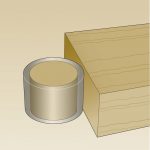We may receive a commission when you use our affiliate links. However, this does not impact our recommendations.

Joint stool. The name of this furniture form gives us clues that it was built by a joiner, not a turner – despite the turned legs. This is one of my reproductions of a 17th-century joint stool, in walnut.
Period woodworking trades in London were strictly regulated.
I’ve temporarily put down my 5⁄16” joiner’s mortising chisel in favor of a 2″ chisel for chopping carpenter’s mortises. I’m timber framing a workshop, and while whomping away on 2″-wide mortises, I have time to think.
My principal work has always been as a “joiner” in the period sense, what we might now call a “furniture maker.” But the trades of joiner and carpenter are pretty similar, so it’s not too far-fetched for me to swap out for larger tools, larger joints and a larger project all around. A drawbored mortise and tenon is the same, regardless of scale.
I live in a time and place in which I can tackle whatever form of woodworking I desire, and nobody’s nose gets out of joint. This wasn’t always the case. Seventeenth-century London was a bustling place, filled with craftsmen of all flavors – but with those large numbers of people came large numbers of regulations.
Joyners’ Work
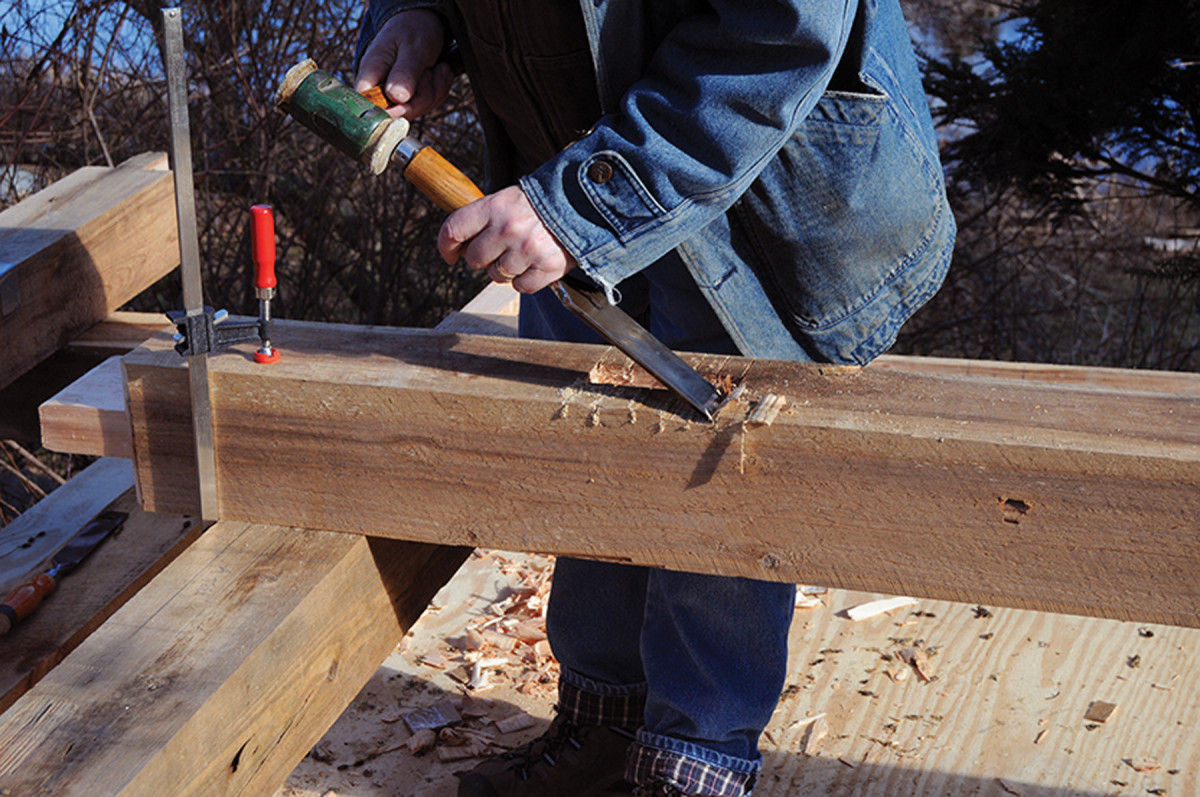
A matter of scale. In the 17th century, the large mortise I’m chopping here for a timber-framed shop would properly be the work of a carpenter, not a joiner.
In 1631, Robert Stone, a London joiner, was accused of “intermeddling” in carpenters’ work. This led to a dispute between the Carpenters’ Company and that of the Joyners’ Company that resulted in a lengthy document drawn up by the city aldermen. To settle things, the aldermen wrote out a piece-by-piece decision itemizing what work each trade could take on.
Among the many works they deemed the joyners’ realm were:
“All sorts of Bedsteads whatsoever (onlie except Boarded Bedsteads and nayled together)…all sorts of Chayres and stooles which are made with mortesses or tennants…all tables of Wainscoate Wallnutt or other Stuffe glewed with frames mortesses or tennants…all sorts of formes framed made of boards with the sides pinned or glewed…all sorts of Chests being framed duftalled pynned or Glued…all sorts of Cabinetts or Boxes duftalled pynned glued or Joyned…all Sorte of Cupboards framed duftalled pynned or glued…all Sorte of presses for wearinge apparell Mercers Silkmen Haberdashers Gouldsmiths Millenors or Napkin presses being pannelled duftalled pynned or Glued”
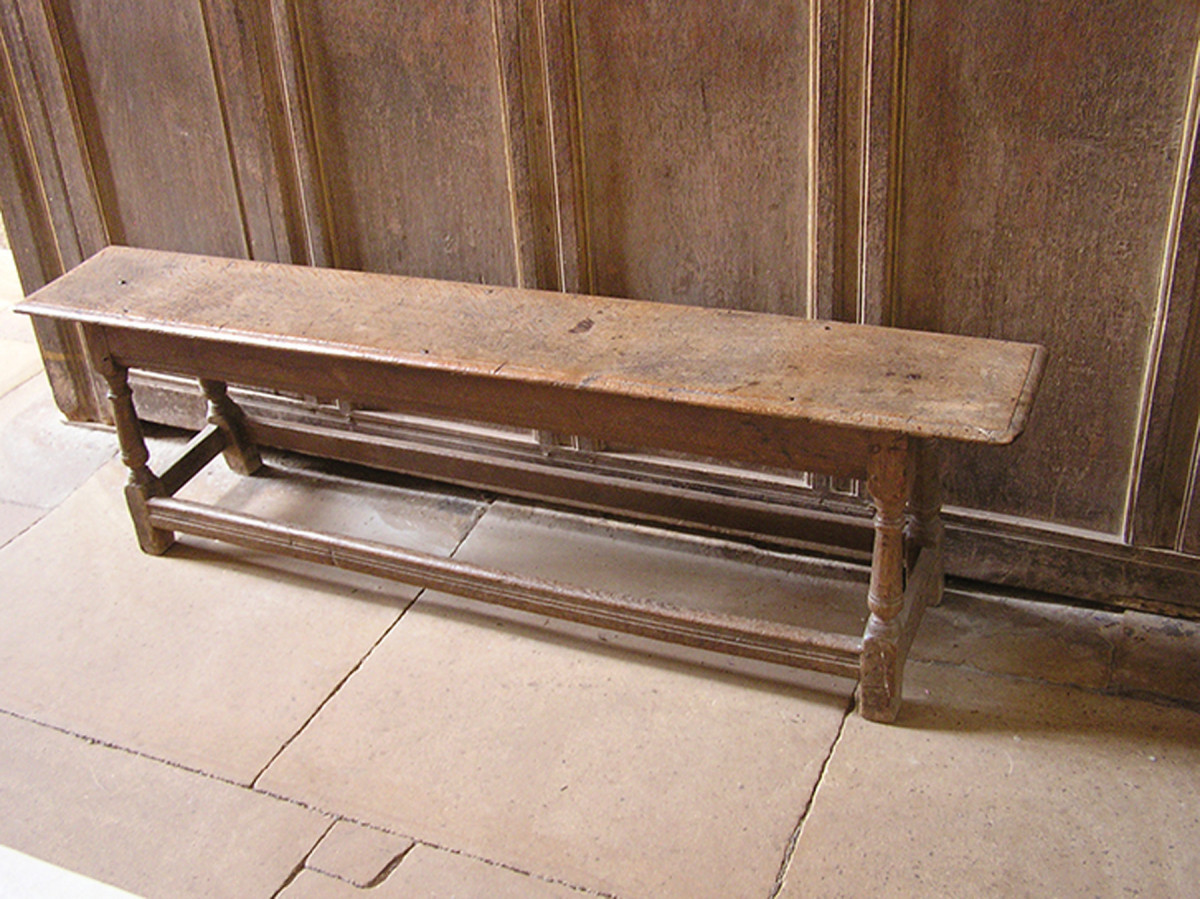
‘Joyned’ form. Shown here is a period example of a 17th-century joined “form” (a bench) in the church at Haddon Hall, Derbyshire.
In the case of the tables “of Wainscote,” this use of the term refers to oak timber, often that imported into London from the Baltic. The forms are long benches, built just like a joint stool usually, only 4′-6′ long. The presses are large cupboard-like pieces, with doors at the front and shelving inside.
Interior Woodwork
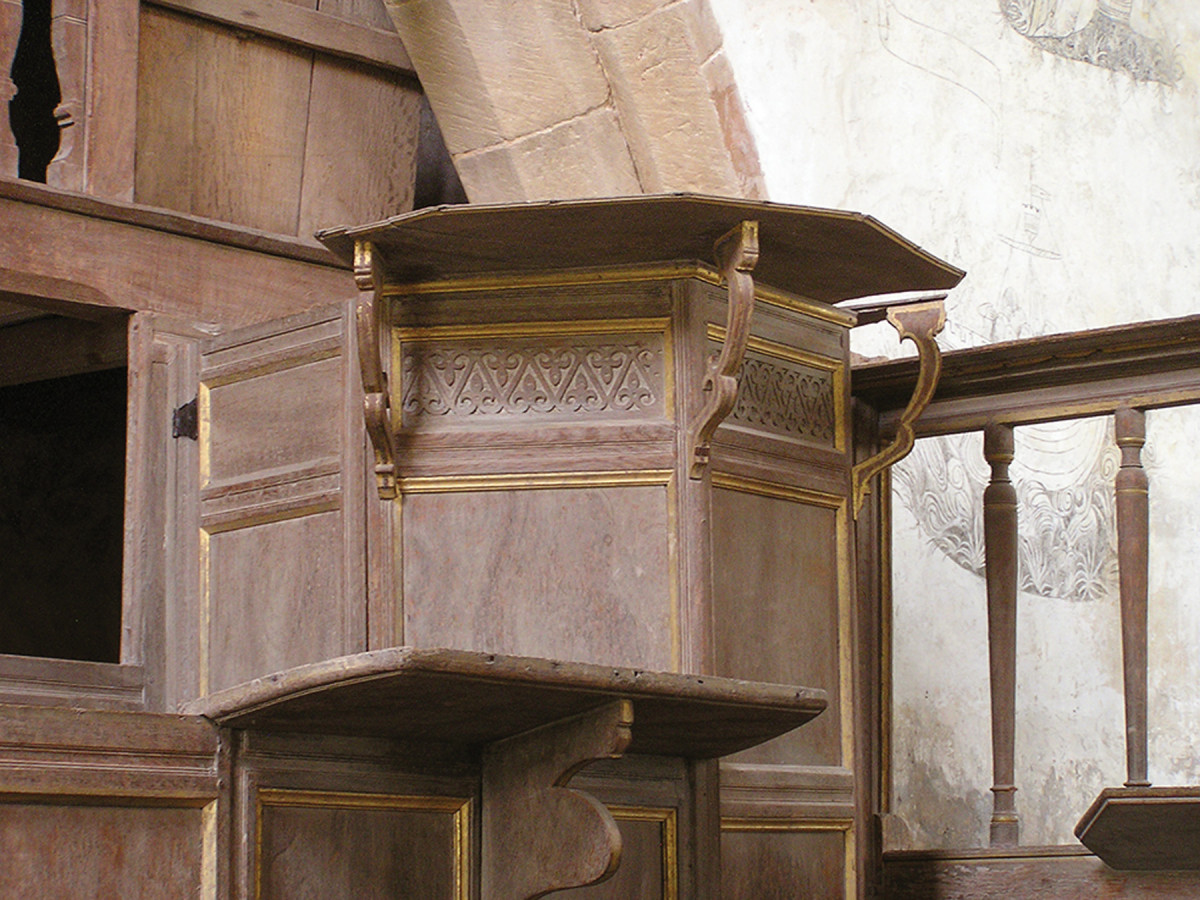
Interiors. Joyners had the license to not only make joined furniture, but also waintscoting and other interior trim. The pulpit and desk in the chapel at Haddon Hall (above), and at St. John the Baptist church in Inglesham, Wiltshire (right), are typical examples of early 17th-century joiners’ work.
All these items fall under the heading that we today would call “furniture,” but joyners also cornered the market on “all Sorts of Wainscott and sealing of Howses and setling made by the use of Two Iages.”
“Sealing” is making frame-and-panel wainscoting. Another period term for a joiner is a “ceiler.” The two “Iages” are thought to be gauges of some sort; I’m still puzzled after all these years as to what that exactly means. It comes up again, just to keep me awake at night.
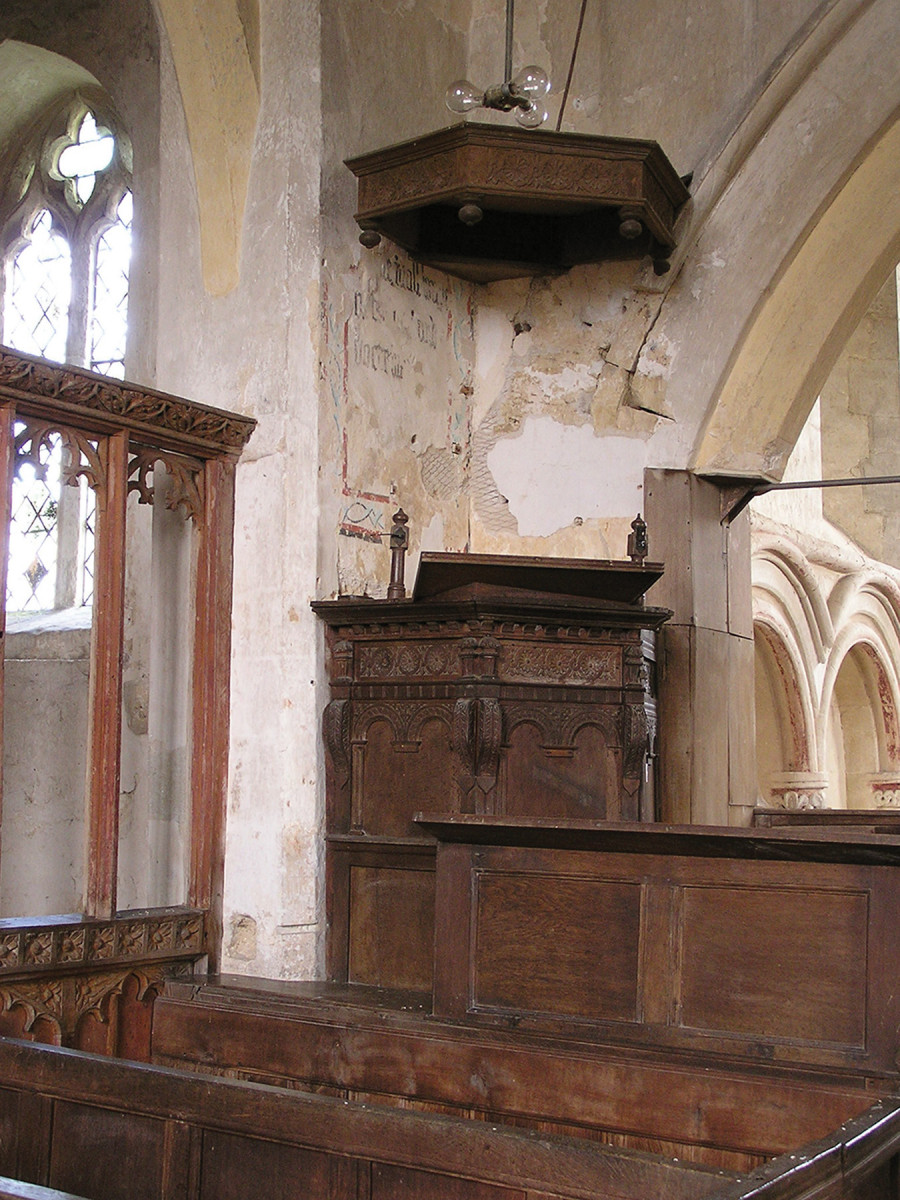 The wainscot was not the only interior woodwork they claimed, their works included “shopp windows,” “doores framed pannelled or Glued” and “all pewes pulpitts and seates with the Deskes belonging to them framed pannelled or Glued.”
The wainscot was not the only interior woodwork they claimed, their works included “shopp windows,” “doores framed pannelled or Glued” and “all pewes pulpitts and seates with the Deskes belonging to them framed pannelled or Glued.”
Just in case the carpenters had any ideas, the aldermen gave the joyners claim to: “All worke whatsoever already invented or that hereafter shall bee invented being made by one or two iages with the use of all manner of nayles”
And the joyners/ceilers were also the carvers: “All carved workes either raised or Cutt through or sunck in with the grounde taken out being wrought and cutt with carving Tooles without the use of Plaines.”
Turners’ Work
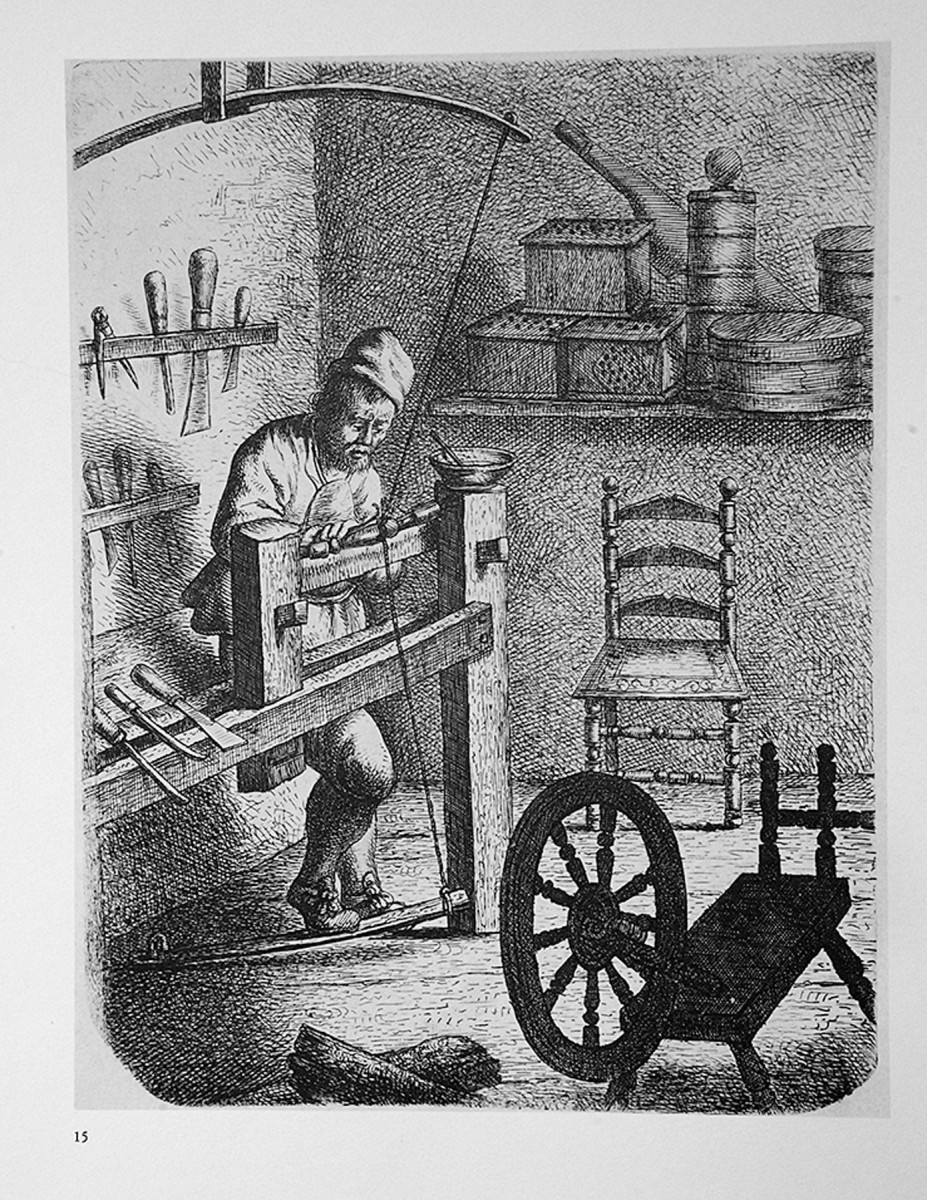
Turned work. Jan Joris van Vliet’s 1635 etching of a turner illustrates what is meant by “whatsoever is done with the foot as have treddle or wheele for turning of wood.”
There are other minor forms assigned to the joyners, but what of the carpenters? I’ll look at them in the next issue. Meanwhile, just to keep things hopping, the joyners were feeling the pinch from another direction just a few months later, when the Company of Turners filed a complaint against them, citing that:
“The Compy of Joyners assume unto themselves the art of turning to the wrong of the Turners. It appeareth to us that the arts of turning & joyning are two several & distinct trades and we conceive it very inconvenient that either of these trades should encroach upon the other and we find that the Turners have constantly for the most part turned bed posts & feet of joyned stools for the Joyners and of late some Joyners who never used to turn their own bedposts and stool feet have set on work in their houses some poor decayed Turners & of them have learned the feate & art of turning which they could not do before.
“And it appeareth unto us by custom that the turning of Bedposts Feet of tables joyned stools do properly belong to the trade of a Turner and not to the art of a Joyner and whatsoever is done with the foot as have treddle or wheele for turning of any wood we are of the opinion and do find that it properly belongs to the Turner’s and we find that the Turners ought not to use the gage or gages, grouffe plaine or plough plaine and mortising chisells or any of them for that the same do belong to the Joyners trade.”
From the sounds of things, the turners were not fully without blame. Imagine turners using the plow plane!
Here are some supplies and tools we find essential in our everyday work around the shop. We may receive a commission from sales referred by our links; however, we have carefully selected these products for their usefulness and quality.







